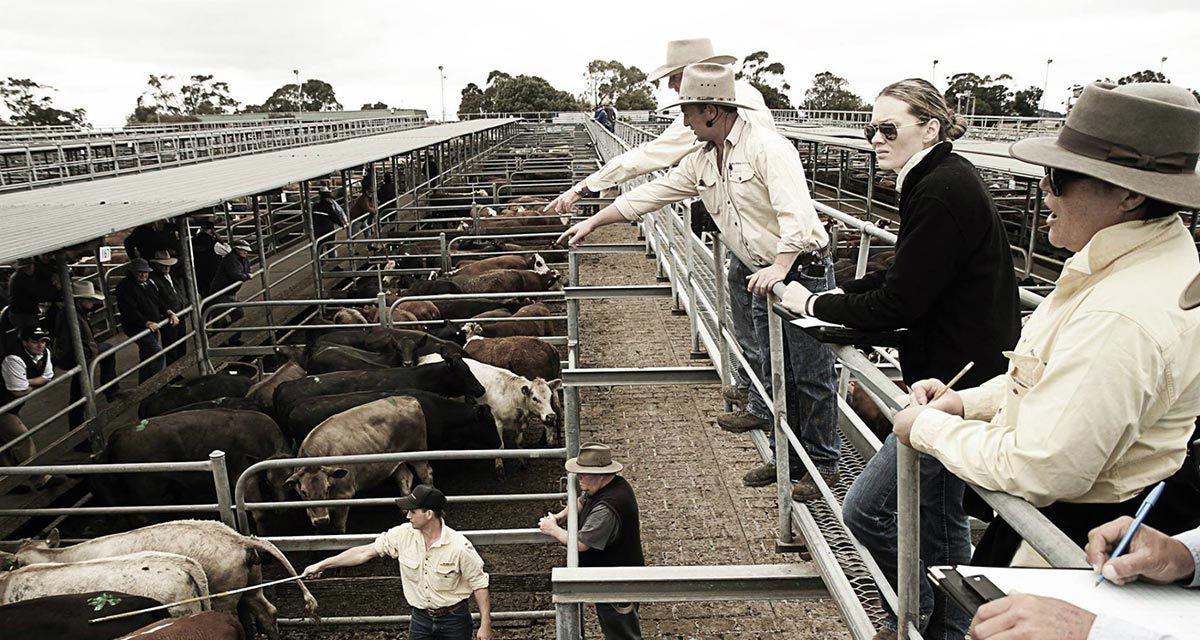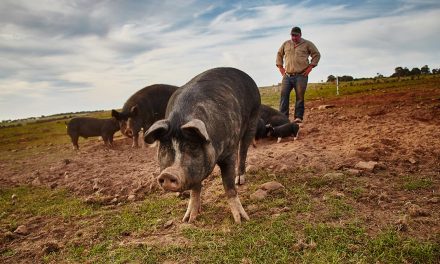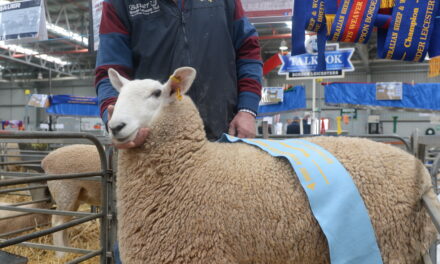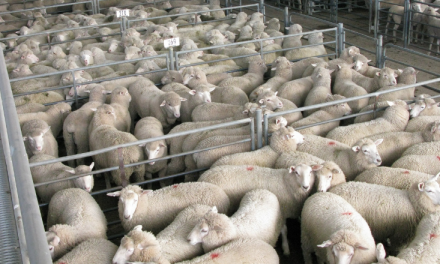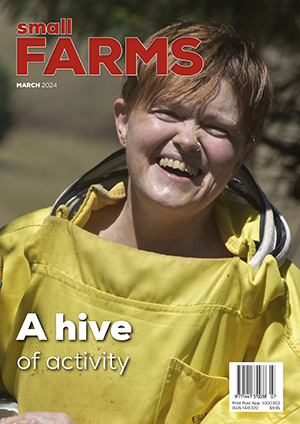“Producers should regularly evaluate market opportunities depending on feed supply, financial circumstances and changes in market price,” says Meat and Livestock Australia’s Josh McIntosh.
“It’s important to be open to ̶ and aware of ̶ alternative market options: there may be a better price to be achieved through a different option, or, a better match for the range of product specifications a producer can supply.
“Too often, farmers can be reluctant to do something other than what ‘they’ve always done’ but in the modern era of livestock marketing, profit can be heavily impacted – for better or worse – with this mentality.”
One way for producers to keep well informed on market trends and movements is to follow The National Livestock Reporting Service (NLRS), which provides information designed to keep producers informed of market movements and up to date on the correlation between prices and market specifications.
“Furthermore, consider developing long-term relationships with regular customers, this way, you can receive feedback on stock sold, take on board suggested improvements, and gain a greater understanding of the needs of the customer,’’ says Josh.
Meat and Livestock Australia’s three key steps to help producers meet market specifications are:
- Managing the nutrition, health and welfare of sale animals to meet target market specifications on time. Focus on the relationship between livestock nutrient requirements, pasture availability and quality, and manage how these interact to influence growth rate, composition and product quality.
- Managing livestock two to three weeks before sale, and during mustering and transport to achieve optimal carcase dressing percentage and avoid downgraded product. Minimise the amount of potentially discounted or unsaleable meat caused by dark cutting (low blood glycogen and low pH) and bruising through careful handling.
- Regularly evaluating market opportunities as feed supply, financial situation or market prices change and selecting markets that maximise enterprise profit. Revisit decisions about preferred markets on a regular basis and the associated methods and timing of sales, to capitalise on changes in market specifications, market prices and selling options.
Australia’s livestock selling systems are diverse, but during the last three decades, there have been two enduring and popular options: the spirited, face-to-face, saleyard markets and the online, “sale by description” auctions.
Other sales methods include:
- Paddock sales – Livestock are inspected on the vendor’s property by a buyer or agent and sold from the paddock;
- Over the hooks (OTH) – Livestock are delivered directly to the abattoir with change of ownership taking place at the abattoir scales. Terms of sale vary between abattoirs. Livestock must be accurately assessed for sale to avoid price penalties;
- Stockyard sales – Livestock are weighed, graded and priced for sale;
- Meat Standards Australia (MSA) eligible sales – Cattle can only be sold through MSA licensed saleyards or livestock exchanges. Producers and agents must be registered;
- Forward contracts – A contractual agreement between a seller (for example, producer) and buyer (for example, processor) to supply a given product at a future point in time for a given price. In some cases, the price is fixed, thereby reducing the producer’s exposure to a fall in market price;
- Producer alliances – A group of producers working together to service market place requirements;
- Value-based marketing – Based on the principle of being paid for the inherent value (quality and quantity) of the product to the buyer and the end user, such as systems that provide clear feedback from the consumer to the producer and has a pricing system supporting these signals and, for lambs;
- Forward price contracts – Producers can manage contracts to sell lambs at optimum times in terms of market readiness and pasture use efficiency.
The arrival of social media and local online selling portals like Gumtree are also responsible for the trade of livestock, however, industry experts warn that both sellers and buyers should avoid such transactions where possible to limit risk to property, animal health, scams or unscrupulous dealings and the upkeep of strong biosecurity in Australia’s sheep and cattle industry.
Today, there are about 122 saleyards across Australia, with half of the selling centres located in NSW and about 40 per cent based in Queensland and Victoria.
During an average year, about 19 million sheep and 6 million cattle are sold through the national saleyard network, with the majority of sheep (73 per cent) and cattle (62 per cent) sold through NSW and Victorian saleyards.
There are a range of influences impacting the movement of livestock throughout Australia, both real and perceived, which send signals to vendors and buyers in making their decision to attend a specific saleyard sale.
For example, some vendors will travel vast distances with their livestock to attend a saleyard with a strong reputation for specialising in a specific class of livestock (such as Millicent, South Australia’s bean stubble-reared vealers; Naracoorte South Australia’s annual first cross ewe sale or the largest same-day prime and store cattle sale in the country at Dalby, Queensland, or one with a history of carving out record prices for any given category. Sometimes, family tradition dictates sale and purchasing decisions at saleyards.
Large regional centres like Roma, Dalby, Dubbo, Wagga Wagga, Ballarat and Bendigo in the Eastern states tend to draw more buyers because the larger yardings usually make it easier to fill their orders.
Saleyards across Australia work on a supply and demand basis which has the ability to make the saleyard system a very competitive market. There are specific drivers for vendors and buyers, however, the two major drivers are seasonal relativities and cycles of drought and good seasons.
Regions with good seasonal conditions will draw stock from other regions that are experiencing poor conditions and the greater the discrepancy, the more powerful the driver to move stock in a particular direction. At the end of a drought, numbers fall significantly as producers re-stock. Numbers progressively increase as the drought continues and producers de-stock, as has been experienced across many sales in Queensland and northern NSW in recent years.
While government and industry-led regulations such as Operational Health & Safety (OH&S), Environmental Protection Authority (EPA), Meat Standards Australia (MSA), National Livestock Identification System (NLIS) and animal welfare requirements will continue to force rationalisation upon the saleyards of Australia, there remains little doubt of their continued strong presence in livestock selling well into the future.
Online auctions have also witnessed a surge in recent years and give choice to vendor, buyer and agent alike.
Three decades after computerised livestock selling became a national reality in the form of Computer Aided Livestock Marketing (CALM), AuctionsPlus – as it has been known since 2000 – trades about $460 million annually worth of livestock, or about 394000 head of cattle and 2.2m sheep. It has plans to trade 20 per cent of Australia’s store and prime sheep and cattle within three years. The business is jointly owned by selling agency groups Landmark, Elders and Ruralco, and also runs regular machinery clearance auctions, wool sales, water rights sales and it even auctions beehive sites on NSW public lands.
AuctionsPlus allows commodity transaction, reserve price setting and legal change of ownership without the seller, buyer or product having to come together physically at the time of the sale.
Simultaneous and interface auctions are conducted on the system. Simultaneous electronic auctions are unique to AuctionsPlus and see all listed lots sold simultaneously in real-time, online. The sale is controlled by the computer.
Interface electronic auctions are also live online in real-time but are interfaced with a physical auction that is being controlled by an auctioneer. A hand-held wireless connected computer is used to bring the on-site prices to the internet screen for the remotely connected bidders to observe. These bidders can place a bid on their computer and the result is immediately transferred to the person on site with the wireless device who will raise that bid with the auctioneer. This type of sale sells one lot at a time and is controlled by the auctioneer who will decide the start price and the bid increments.
AuctionsPlus cattle sales are held weekly with the majority of the cattle (70 per cent) coming out of NSW or Queensland. Two sheep sales are held each week attracting listings from across the country from Hughenden to Hobart in the east and in the mixed wheat/sheep districts in the west. Separate sales are held for sheep listed in the eastern and western states.
Among the big attractions of computerised sales for vendors, has been livestock not needing to leave the paddock unless they sell, and freight costs being covered by the buyer. Other persuasive factors supporting electronic selling include the price difference in offering cattle via AuctionsPlus at $6.50 a head compared with an average $15 in saleyards, or 70 cents/head for sheep against about $1 in most yards.
Both selling systems have a strong history and a solid, growth-orientated future plan – as well as a host of benefits to vendor and buyer, according to experienced livestock agent Dale Keatley, of Ray White Keatley, Mount Gambier, south eastern South Australia.
“There is no doubt that both selling options have cemented their place in Australia’s modern livestock industry,’’ says Dale, who alongside wife Harriet, has been at the helm of Keatley Livestock (now Ray White Keatley) for the past 17 years, and a stock and station agent for the past three decades.
“AuctionsPlus has really taken off in the last few years particularly, and we see agents coming on board this system now that haven’t previously been converts. I’ve got a lot of clients requesting the option now and the results are very, very good. At the same time; the saleyard selling centres are seeing ̶ and setting records for ̶ some of the best prices in many years, particularly in the cattle job. When they’re on fire like they are now, they’re very, very hard to beat and can outperform over-the-hooks (OTH) prices and online auctions,” he explains.
Dale notes the role saleyards play in setting national data on livestock pricing – particularly the Eastern Young Cattle Indicator (EYCI) – underpins their intrinsic value to the industry.
“Saleyards govern the EYCI and in turn, that relevant data guides AuctionsPlus prices.’’
For fat cattle, the saleyards have been a particularly strong selling system benefiting a range of operators, explains Dale. Likewise, the momentum generated through the face-to-face saleyard markets also draws record prices for many other livestock classes, including lambs.
On the online front; simplicity, convenience and choice are clear highlights of the AuctionsPlus online auction system, explains Dale.
“I’ve witnessed the development of AuctionsPlus since the beginning,” he says, “the pioneers of the system had a vision, and they’ve been proven correct.
“The convenience for buyers, sellers and importantly, the logistics side; the truckies, is very evident. Producers are able to retain full control of their livestock and are assured of market value or better when protected by the reserve price set. Furthermore, there is a seven-day window for collection of stock, so truckies are able to negotiate a suitable time for pick-up and delivery suitable for both parties.”
For more information:
Visit Meat and Livestock Australia at www.mla.com.au, AuctionsPlus at www.auctionsplus.com.au or phone Dale Keatley at Ray White Keatley on (08) 8724 8966 or visit www.raywhitekeatley.com.au

